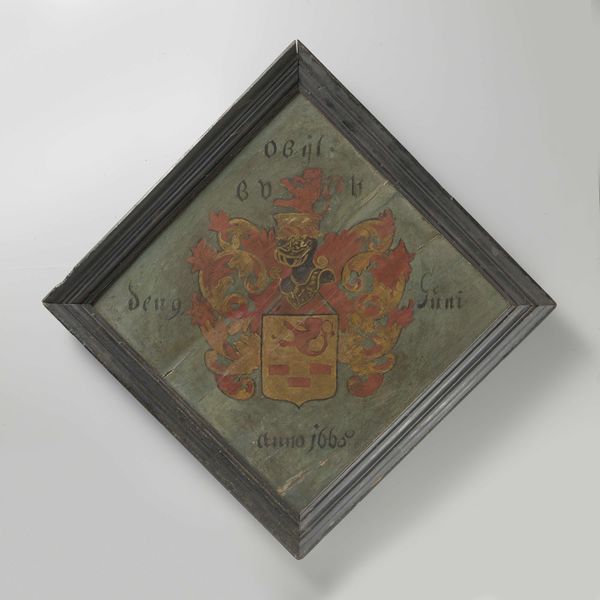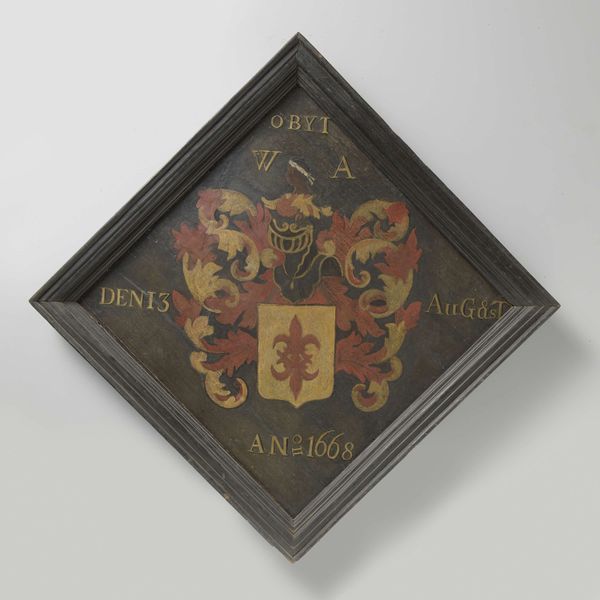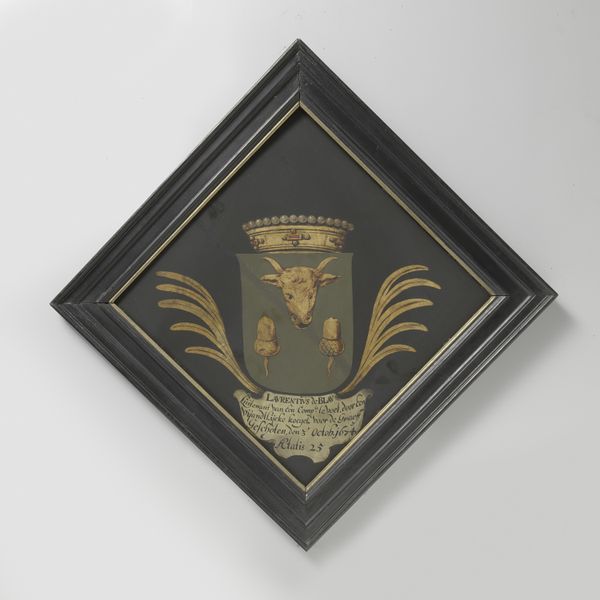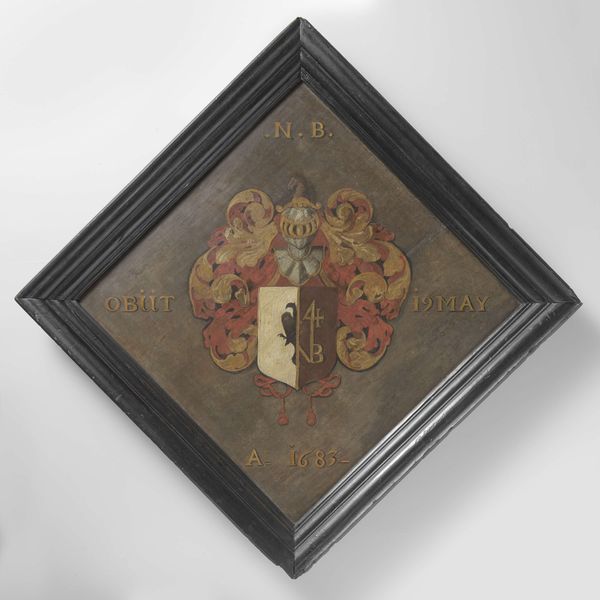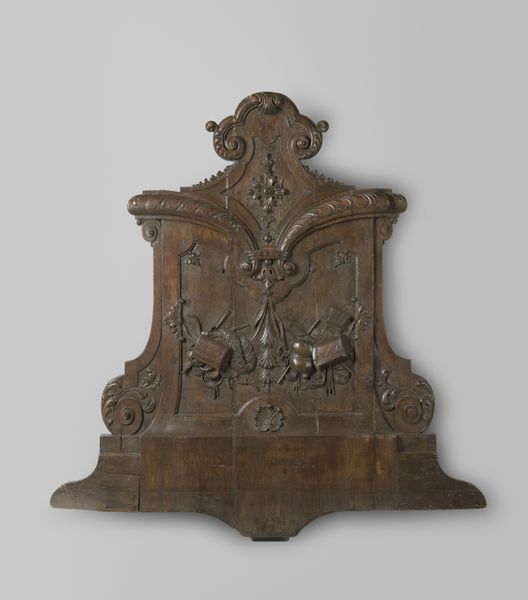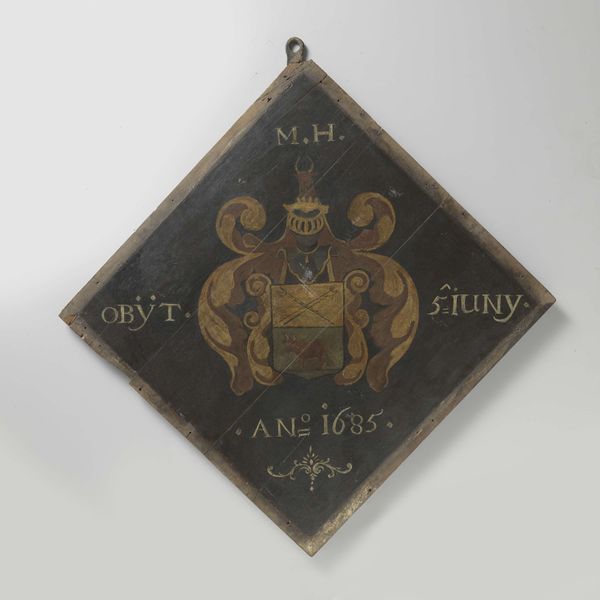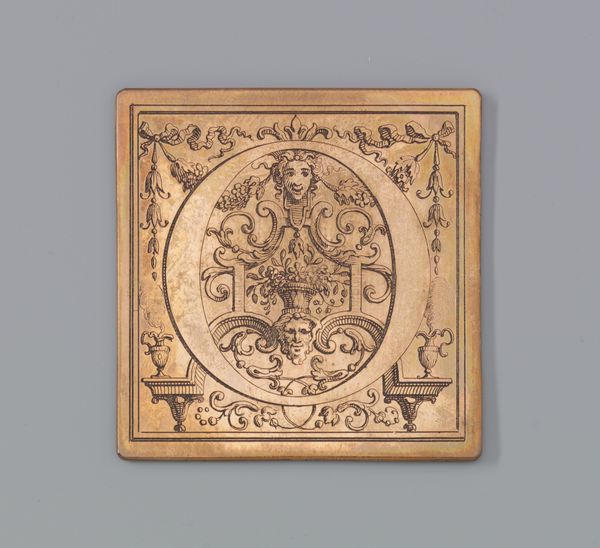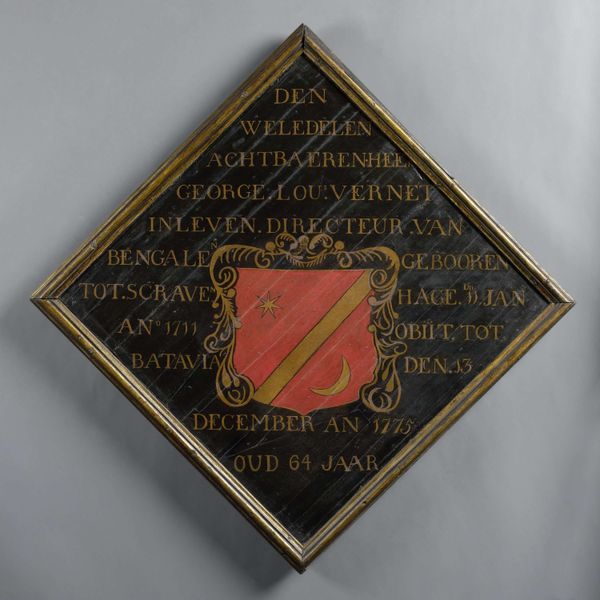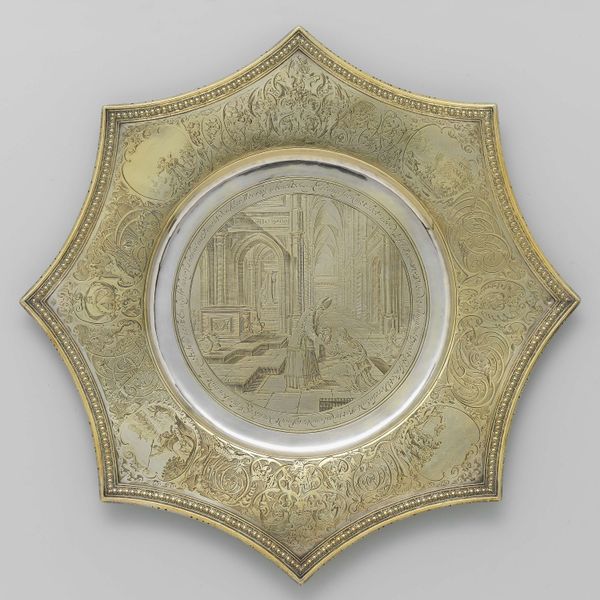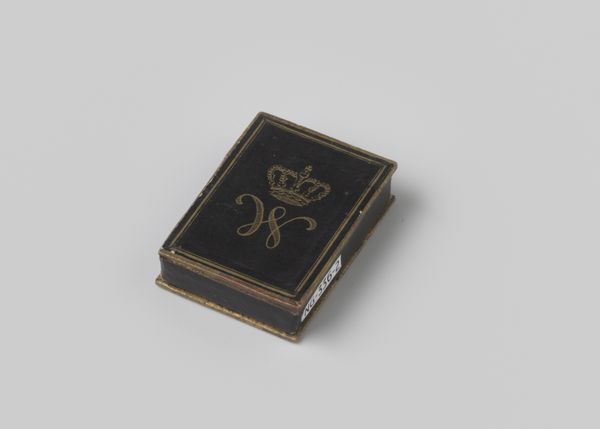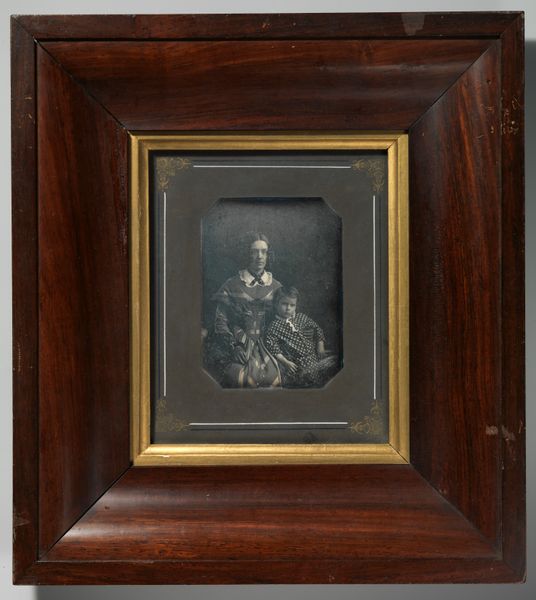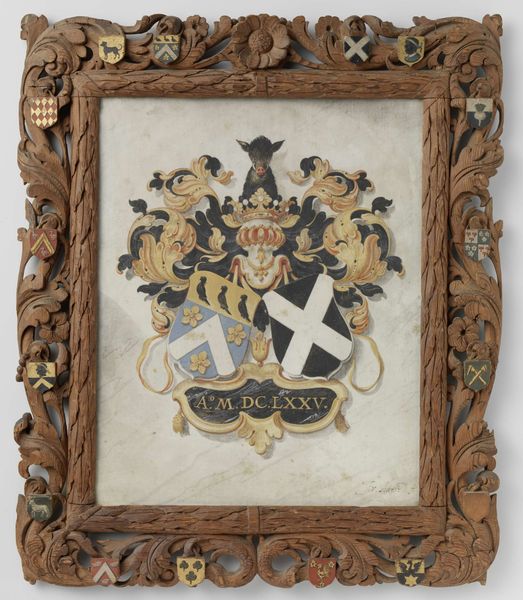
Grafbord van Rogier Beernards (gestorven 1733), directeur van Bengalen (1731-1733) after 1767
0:00
0:00
Dimensions: height 128 cm, width 129.5 cm, depth 9 cm
Copyright: Rijks Museum: Open Domain
This Grafbord, or hatchment, was painted in 1733 by an anonymous artist after the death of Rogier Beernards, who was director of Bengal for the Dutch East India Company. Hatchments like this served as public announcements of death and status. The coat of arms is painted on a lozenge-shaped board, framed in black, and displayed on the facade of the deceased’s home, signaling both mourning and aristocratic identity. The iconography tells a story of wealth acquired through colonial administration. Beernards' position in Bengal reflects the Dutch Republic’s powerful global reach at this time, and the visual codes of heraldry reinforce social hierarchies. To understand this work fully, scholars would examine Dutch visual culture, the history of the Dutch East India Company, and genealogical records to determine the meaning and origins of the coat of arms. In this way, we come to understand the complex social and economic forces that shaped not only the life of Rogier Beernards, but also the art made to commemorate it.
Comments
No comments
Be the first to comment and join the conversation on the ultimate creative platform.

